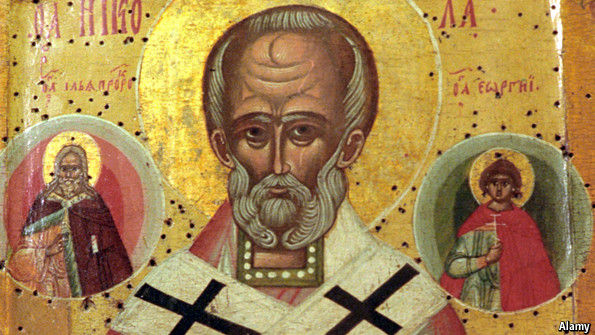
In almost all the religions of the world, the idea exists that certain individuals have attained an extraordinary state of holiness. That can either mean proximity to God or, in the case of a non-theistic religion like Buddhism, a high spiritual state. In most religions there is an internal tension between the desire of ordinary believers for flesh-and-blood heroes whom they can venerate and the fear among religious authorities that such cults are a distraction. In the world of Islam, that tension is still raging and claiming lives, as it did among the Christians of medieval Europe. For practitioners of popular Sufism in West Africa or south Asia, venerating the tombs of holy individuals is a central feature of their faith and culture; but purist Sunni Muslims regard such practices as an idolatrous deviation from worship of the one God. This sort of discord has led to civil war in Mali, bomb attacks in Pakistan and the destruction of historic monuments in Saudi Arabia. And from the earliest Christian period, followers of Jesus venerated the memories and the physical remains of fellow-believers whom they held in high esteem, either because they were martyrs for the faith or because they had led outstandingly holy lives.
Church authorities have struggled at times to keep control over this phenomenon. In the second millennium, part of the difficulty of defining sainthood was resolved by centralising and formalising the procedures whereby saints are certified. The formalities laid down by the Roman Catholic church are the most elaborate. Declaring somebody a saint can take more than a century. It normally requires an initiative from the bishop in whose territory the holy person lived; an expert study; and then a referral to a Vatican institution called the Congregation for the Causes of Saints, which can investigate further, hold a vote if necessary and refer the matter to the pope. Even then full sainthood is not usually conferred unless it is determined that two miracles have occurred thanks to the prayers, in the after-life, of the holy person. But the Vatican has slightly accelerated the usual procedures in the case of two recent popes, John XXIII (1958-63) and John Paul II (1978-2005) who will be proclaimed as full saints next April. The Orthodox church also has formal procedures for recognising saints, but they are more decentralised; among the thousands of saints acknowledged and venerated by the church, some are known only in one country or region. In recent days, the Patriarchate of Constantinople has "glorified"—a process which involves writing new hymnography and endorsing a style of icon—a remarkable monastic called Porphyrios Bairaktaris who worked for much of his life as a hospital chaplain in a grimy district of Athens. Among people who knew him, stories abound of his gifts of healing, premonition and wise counsel; the authorities were simply recognising something the faithful knew already.
Especially in Christianity, then, recognising saints has always been a mixture of top-down and bottom-up. Church authorities can single out an individual for attention while lay-folk may develop their own cult around a holy person. The net result is that the saints who feature on the church calendar are an extraordinary mixture: they include pacifists and warriors, kings and beggars, activists and ascetics. There are some whose lives, and flaws, are recorded in every detail and others whose story remains shadowy, like the early Christian bishop in Anatolia whom we remember as Saint Nicholas (pictured)—or, as he is more commonly known, Santa Claus.
SOURCE:http://www.economist.com
No comments:
Post a Comment